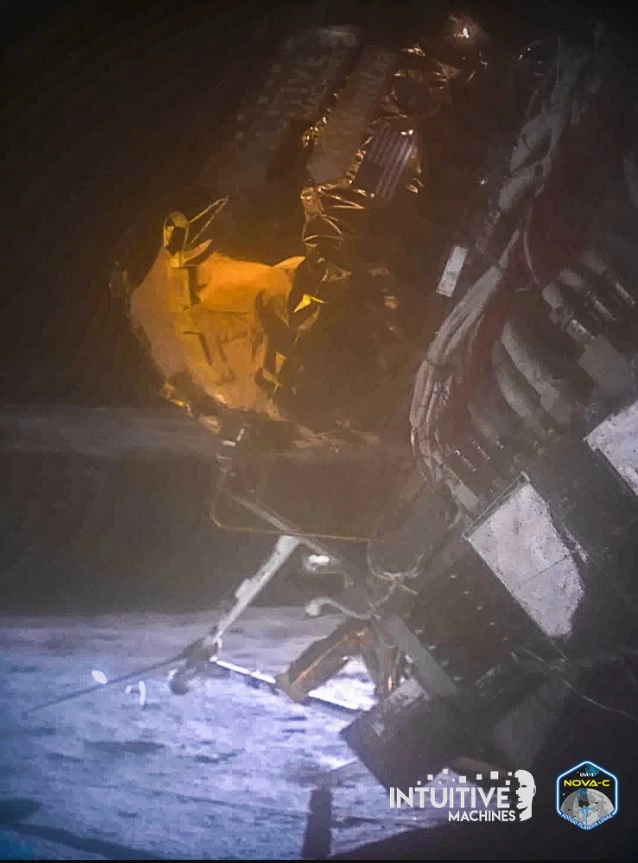As the Odysseus Moon lander faces its final hours of life, it turns out there's one final twist in the saga: The spacecraft broke one of its legs on landing, thanks to a cascade of mistakes that began back on Earth, when a safety switch wasn't flicked on prior to launch.
The IM-1 mission has been a strange mixture of success and mishaps. A week after what seemed like a flawless launch on February 14, it was deemed the first successful American Moon landing in more than half a century. It was also the first privately owned and operated spacecraft to land on the Moon and the first lander to use cryogenic fuels.
Unfortunately, it also fell over on landing and ended up lying on its side. This would be bad enough, except it turns out the fall was the result of a chain of events caused by one simple mistake.
According to Intuitive Machines, which built and owns the Nova-C class Odysseus lander, a safety switch that would have activated the spacecraft's laser landing navigation system was left on 'off.'
When the flight engineers discovered this following launch, they found a workaround, using a software patch to allow NASA's Navigation Doppler Lidar experiment aboard the lander, commandeering the inactivated system. However, a data flag was missed – one that would have allowed the software to determine if data was valid.
Odysseus was largely flying blind and relying on its inertial guidance system and optical navigation algorithms. This meant that the lander didn't have an altimeter to tell it how high it was as it descended to the lunar surface.

It's now been concluded that Odie came down short of its intended landing site on higher terrain than planned for by the mission planners. Instead of hovering and lowering slowly, Odysseus descended faster than it should have and was also flying laterally. The spacecraft hit the lunar surface hard and skidded until one of the landing legs snapped.
This could have ended the mission then and there, but the broken leg absorbed some of the impact and the engine was still throttling, which allowed Odysseus to tilt over gently and come to rest on its helium tank at a 30-degree angle.
Odie was able to charge its batteries through its solar panels, and all of the payloads with the exception of one camera experiment were powered and returning data. This would be great, if it weren't for the fact that the fall put the high-gain radio antenna out of commission, forcing Mission Control to fall back on the low-gain antenna and high-powered Earth-based receivers to receive data and images at a painfully slow rate.
Despite all this drama, Intuitive Machines says that Odysseus is in its last hours of life. The solar panels will soon be in shadow – and even if they weren't, the Sun will soon be setting at the landing site, plunging the lander into the 14-day freezing lunar night, which it is unlikely to survive.
Source: Intuitive Machines






